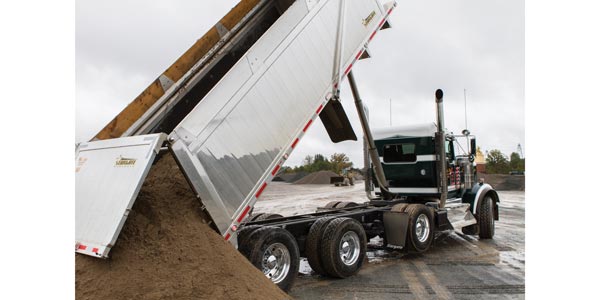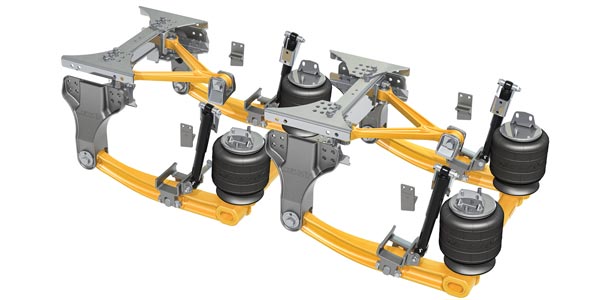Unexpected out-of-service events, especially when they happen on the road, are always expensive—too expensive to be dismissed as being inevitable. Yet many fleets, in their busy day-to-day operations, too often fail to address how the road breakdowns that they do experience might be avoided in the future.
Dick Hyatt, president of Decisiv Inc., a provider of service relationship management software that can help minimize unscheduled downtime, said, “The traditional costs of commercial vehicle maintenance are measured in hard dollars, but while the trucking industry focuses on cost pressures and other challenges, many completely out of their control, fleets still ignore the fundamental business impacts associated with days out-of-service for service and repair events. This fundamental flaw misses the impact that this has on revenue, customer and driver retention and net profit.”
Ryder System Inc. is one fleet that has not fallen victim to neglecting the financial problems associated with unscheduled downtime. While it’s a call no one ever wants to get, Ryder’s management knows if it happens, getting a disabled truck back on the road as quickly and safely as possible is vital. The company also understands it’s important to determine exactly what caused the problem so procedures can be developed to minimize or eliminate such problems in the future.
According to Ryder, heavy-duty trucks often experience at least one emergency breakdown annually. Not only are such events disruptive, compromising delivery schedules, customer commitments and product safety; they also can be dangerous. Idle vehicles and their drivers waiting for assistance are exposed to the dangers of drivers who are distracted or traveling at high speeds.
Prevention via PMs
Based on experience with its more than 2,000 assets, Ryder found that the most frequent reasons for road breakdowns are tires, electrical system problems, brake issues and running out of fuel. It also found that regularly scheduled, thorough preventive maintenance (PM) routines can help pre-empt many such problems before they cause emergency situations.
Melvin Kirk, vice president of maintenance and quality operations at Ryder, said, “Traditionally, when a vehicle came in, we would execute the activities that were mandated by federal or state regulations or by our customer’s requirements. We now have intensified our focus around what we have started calling the perfect PM. This is essentially taking advantage of the opportunity, during each preventive maintenance routine, to execute all of the maintenance activities that might be required at that time.
“The objective of such activity is to ensure that the vehicle will run from that event to the next scheduled PM without any break in service. That means we execute everything from existing campaigns to any necessary repairs—doing more of a diagnostic evaluation of the vehicle at the time of the scheduled PM in order to prevent any unscheduled event midstream.”
Efficiency is important
Ryder looks upon a PM as an opportunity to improve the overall health of a vehicle. During time studies done in its shops, the company found that a maintenance technician, left only with his experience and a PM sheet, could walk as much as 4 mi. while working on a single vehicle.
“To correct this,” Kirk said, “we establish the most efficient flow around the vehicle to minimize all of that walk time. We now also have the parts readily available that will be needed for the scheduled routine based on historical PM data. For example, any filters that will be needed will be right at hand. As a result, our technicians can more efficiently execute a PM from a quality and a speed standpoint. That is one of the most significant advances we’ve made over the last two or three years in our maintenance routines. We’ve taken time and distance out of the exercise and improved the quality of it.”
As indicated above, Ryder data indicate that tire problems are the most frequent cause of on-the-road breakdowns. This is particularly true during the summer months. Kirk said, “We find tires represent a very important part for maintenance uptime; so in our PM routine we stress an evaluation of the health of tires.”
The fleet’s maintenance technicians will do everything from rotating to changing out tires during preventive maintenance events to minimize the chance of having any issues before the next scheduled PM from the tires or wheels. The entire wheel system is evaluated every time they see a vehicle. They record the wear on each individual tire on the vehicle and have protocols in place requiring the position of the tires be changed if there is an excessive variance between two side-by-side tires. They also look at the wear patterns of the tires all around, which could result in changing a tire or rotating it across the vehicle. Kirk said, “In our preventive maintenance routine, we also do laser measurements to ensure we have correct wheel alignment.”
Ryder Heavy Duty Truck Fleet program
Ryder is good, but no one is perfect, so if a vehicle fails on the road the fleet has established breakdown analysis teams in each one of its shops with specified roles in each one of our shops that are responsible for determining exactly what led to the problem.
Service island activity
Once a truck crosses the threshold of a Ryder facility, the first place it’s going to go is to a service island. At that island there will be a service attendant who will initiate the fueling of the vehicle. He or she will also do a prescribed inspection around the vehicle that will include lights, tires, windshield along with a visual inspection of the undercarriage etc. Kirk said, “We maintain a 12- to 17-point inspection depending on the vehicle type that comes into the service island. Every time you cross the threshold of a Ryder facility, we are going to inspect that vehicle as if we were evaluating it from the DOT standpoint, as well as a maintenance health standpoint.”
Although drivers are required to do pre- and post-trip inspections of their vehicles, Ryder does not make the assumption that either of those has been done as completely as possible nor does the company make the assumption that when a vehicle enters a Ryder facility that there hasn’t been some issue develop since its last inspection. Kirk said, “Such a policy allows us to catch many issues, for example, small fuel leakage or a light that might be out, which could draw attention during a DOT inspection standpoint or, more importantly, from a maintenance standpoint.”
Breakdown analysis and warranty
Ryder is good, but no one is perfect, so if a vehicle fails on the road the fleet has established breakdown analysis teams in each one of its shops with specified roles in each one of our shops that are responsible for determining exactly what led to the problem. Such a program has proved to be an effective method of improving the fleet’s PM and fueling station inspection programs.
Although it was not established to be so, the breakdown analysis program has also been an important contributor to effective warranty management for the fleet. Kirk said, “It forces the team to go back through the information about the event and make a forensic analysis of what happened. Was the failure related to activities we did or should have done during our PM or was it the result of a premature failure of a part? Was it possibly an engineering related issue of the vehicle itself? Once they do that, we have a fairly robust understanding of the cause of the event and if it was related to the failure of a component, which would allow us to make a warranty claim. We also share that analysis with the rest of our team members to help shorten the time required to analyze a future event.
Technology can help
Many of its customers use telematics to provide management data related to hours of service and operational safety. Ryder has taken a further step and is accessing information from the engine’s ECM via telematics on the condition of the engine itself. Kirk said, “Using this information we can alert the customer to any impending problems with the vehicle. We plan on building up, over time, more and more data that will help us better understand the on-road health of our vehicles.”
Another technology that offers fleets the possibility of addressing the causes of vehicle down time is offered by the use of service relationship management (SRM) software to measure and manage the causes, both internal and external, of service and repair events to improve vehicle uptime and availability. Decisiv Inc., a supplier of such software, has found that formal attention of vehicle’s days out of service can significantly influence a fleet’s bottom line.
Some conclusions, based on a recent survey of nine fleets attending the company’s maintenance summit, are of particular interest. These fleets averaged:
• 277 tractors;
• 9,538 revenue miles per truck per month;
• $20,695 in revenue per month ($2.17 per mile);
• 1.51 service events per month; and
• 3.19 days out of service (DOS) per month.
Using average industry financial data, Decisiv calculated that, were these fleets able to reduce days out of service by just 25%, they would achieve a monthly increase of $1,123 in revenue per tractor, a 5.5% increase in asset utilization, an increase of $685 in variable operating expense (due to increased truck utilization) and an increase of $438, or 45%, in net profit per truck. Note these are monthly figures! According to Decisiv, the use of its service relationship management software can achieve these improvements.
Unscheduled downtime can significantly deteriorate a fleet’s profits. Attention to the reasons why trucks experience time out of service and subsequent attention to eliminating those reasons can help increase a fleet’s bottom line.
Source:
http://www.fleetequipmentmag.com/verizon-telematics-eld-ready-bundles/


















